Disclaimer: I am not being endorsed by Red Hat or its parent company, IBM, to write this article or complete this certification. All views expressed are my own, and I am preparing for this exam independently of any organization. Also, per Red Hat’s Non-Disclosure Agreement (NDA) for the exam, I will not discuss specific exam tasks or Red Hat course material. I will only mention alternative resources that are publicly available and do not breach the NDA.
Over the course of my experience as a UX designer, one key pattern I’ve seen is the recurring challenge of foundational knowledge (something I’ve struggled with too in my UX career). This knowledge is needed to lead Domain-Driven Design (DDD), an approach to software development that prioritizes the core business logic (the “domain”). DDD involves close collaboration between developers, designers, and domain experts to create a shared terminology, along with using strategic and tactical design patterns to structure software around business concepts.
A 2010 Usenix study, “Understanding Usability Practices in Complex Domains,” surveyed 21 senior usability professionals in fields such as medical imaging, aviation, and network security. The study found that even highly experienced practitioners struggled to gain enough domain expertise. Common obstacles included specialized jargon, complex and high-stakes workflows, and limited access to representative experts.
Fast forward to 2024, and the challenge hasn’t gone away. A case study on a Natural Language Processing application (NLP), “Generative User Experience Research for Developing Domain-Specific Natural Language Processing Applications,” reported that UX work without deep domain immersion often led to misunderstandings of technical terminology and logged codes.
To better contribute to DDD applications through enhanced collaboration with DevOps teams and technical stakeholders, I am taking the initiative to commit to study and practical labs at home. This preparation is necessary to pass Red Hat’s EX200v10 exam, which will make me a Red Hat Certified System Administrator (RHCSA). My journey toward certification began after three webcam interviews for a senior UX role at Red Hat. After completing the interview process, I realized it was essential to validate the Linux knowledge I have gained since discovering the project in 2007 with a rigorous, performance-based certification.
Why specifically Red Hat Enterprise Linux? What about other options in a market dominated by cloud computing?
Red Hat Enterprise Linux is a commercial enterprise distribution widely used in government defense, security, retail, and other industries. A 2017 case study from Red Hat details how the British Army migrated to Red Hat Enterprise Linux and moved from a physical infrastructure to a software-defined data center. This production deployment supports critical services for military personnel, veterans and families, rather than just experimental or pilot use. Ingram Micro’s 2017 case study highlights how a major retailer implemented Red Hat Enterprise Linux to standardize its Linux server environment, focusing on creating a controlled and optimized infrastructure. This approach aimed to enhance efficiency and reliability across operations. While competitors such as Canonical’s Ubuntu and SUSE Linux Enterprise Server also serve governments, Red Hat Enterprise Linux remains the top choice for enterprises for its certified ecosystem and familiarity with IT professionals.
It is for this reason that I have singled out the Red Hat ecosystem as the one I want to contribute DDD designs to. The Linux Foundation Certified System Administrator certification is another performance-based exam that is vendor-neutral, but it isn’t verified against the rock-solid reputation Red Hat has built over the years. Although tools such as yum, dnf and firewall-cmd are unique to Red Hat systems, others like fdisk, lsblk, top, nice and renice can carry over to other Linux distributions. Other contenders include multiple-choice certifications such as CompTIA Linux+ and LPI Linux Essentials. Outside Linux, there are multiple exams from Microsoft and certifications offered by Google and IBM through Coursera. The problem is that multiple-choice certifications, while they can serve as an open door and are more affordable, don’t mean a candidate can demonstrate these skills on the job. Red Hat’s performance-based approach requires the exam taker to demonstrate Red Hat Enterprise Linux (RHEL) proficiency according to the exam’s objectives, which increases the certification’s value in the market.
Approach
For administrators starting from the beginning, Red Hat offers Red Hat Enterprise Linux Technical Overview (RH024), Red Hat System Administration I (RH124), and Red Hat System Administration II (RH134) courses. As of writing this blog post, the Red Hat Learning Subscription that includes these units costs between $6,000 and $9,000. I decided not to invest that much money.
Fun fact: After taking a Red Hat Skills Assessment, I was recommended to skip straight to Red Hat System Administration II. This made me feel confident that I could prepare for the exam with self-study alone.
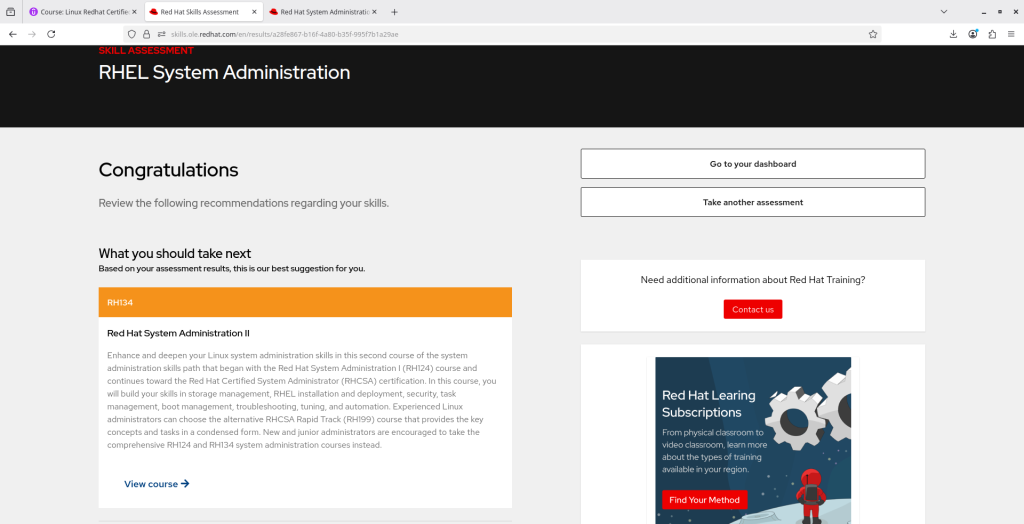
Studying for this certification has involved the following methods:
- Watching all 14 hours of Imran Afzal’s Linux Red Hat Certified System Administrator (RHCSA) course on Udemy.
- Reviewing questions and answers from 6 Full RHCSA Practice Exams with Step-by-Step Solutions to Guarantee You Get Certified by Ghada Atef, also on Udemy.
- Reviewing material and taking practice exams available in Sander van Vugt’s book, Red Hat RHCSA 9 Cert Guide: EX200 (Certification Guide).
- Practicing exam topics for the new version of the exam not covered in EX200v9.5, including Flatpak.
- Practicing exam objectives on both a physical PC running Red Hat Enterprise Linux 10 and multiple virtual machines.
This intensive approach is designed to match my personal learning style and increase my chances of passing the exam on the first try. I won’t give exhaustive reviews of each resource, but I will briefly recommend one over another.
Throughout this experience, I recommend Sander van Vugt’s book over the Udemy material. Aside from topics on containers not covered by EX200v10, the book’s practice exams do a better job of writing each task with the ambiguity likely to appear in the real exam. The biggest disadvantage of the Udemy material is its lack of rigor. I take issue with the pop culture references used in the course. While intended to make learning fun, TV shows popular in one country may not be recognized in another. The more focused and context-appropriate material in Vugt’s book allows the reader to engage fully with all topics without needing to navigate cultural biases.
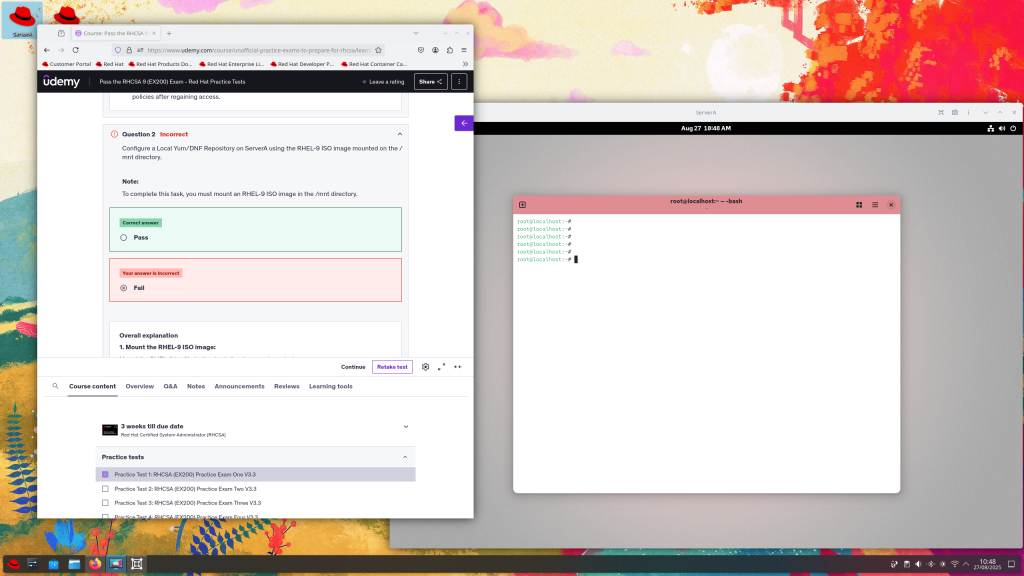
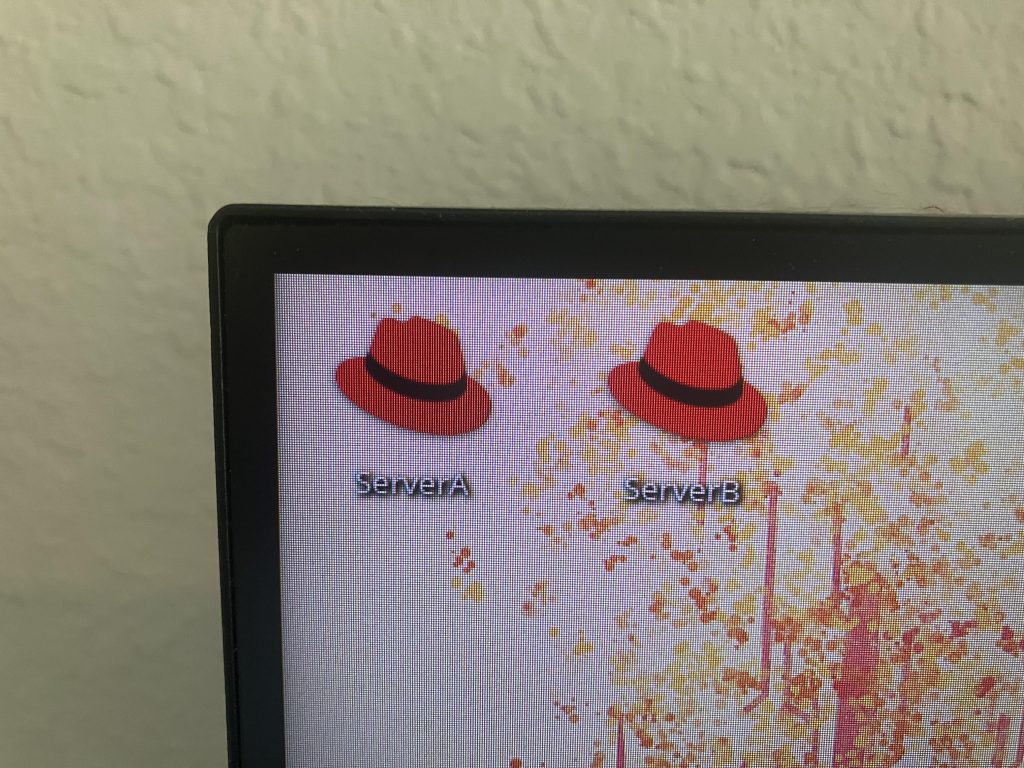
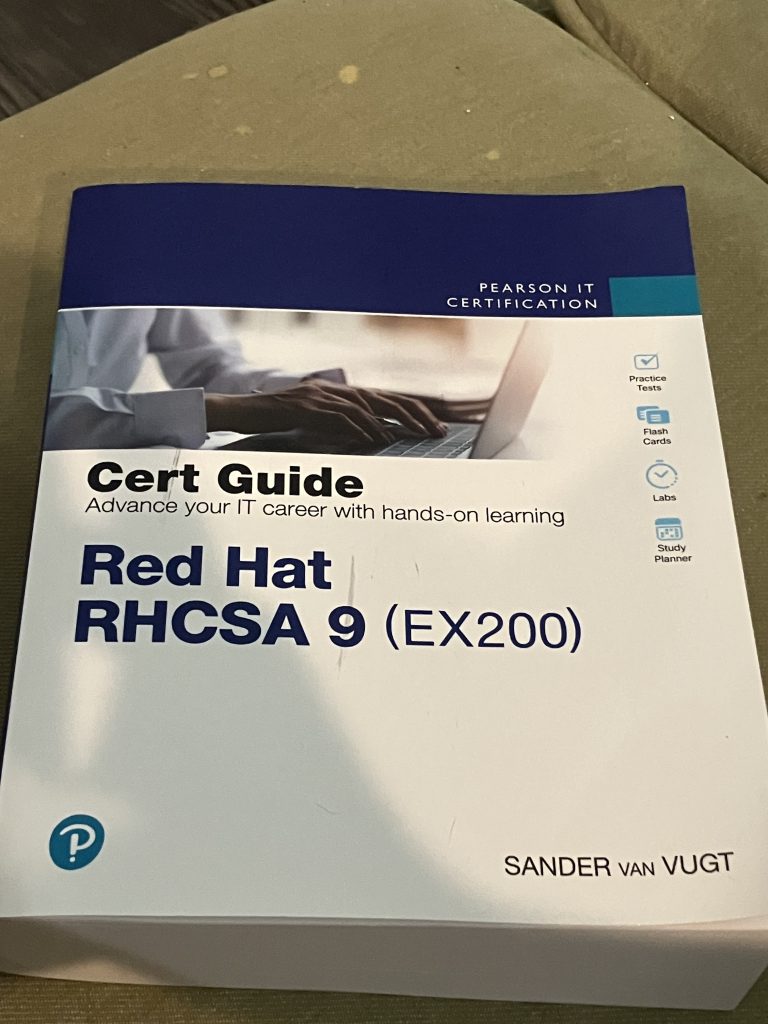
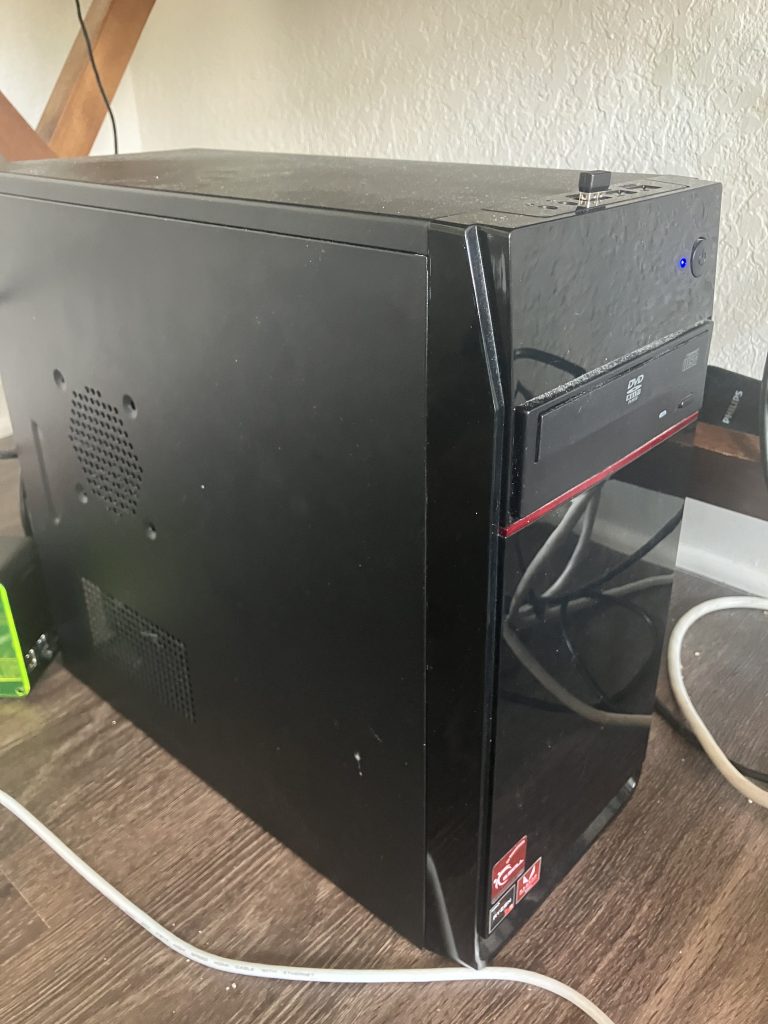
Challenging Topics I’m Reviewing More Vigorously Before the Exam
- Managing SELinux permissions, booleans and directory contexts.
- Volume groups and logical volume management.
- Creating and mounting Network File System (NFS) volumes.
- Managing processes in the terminal with top, nice and renice.
- Writing Bash scripts.
- Managing crontab tasks.
- Configuring password aging and user account defaults.
Topics I Already Know Well
- Managing systemd services.
- Editing text files with Vim and Nano.
- Tracking journalctl logs and writing errors to a file.
- Coreutils commands - cat, echo, grep, find, touch, cd, mv, cp, man and more.
- Creating new users, groups, and assigning users to groups.
- Managing permissions - chmod and chown.
- Configuring SSH to allow remote login, including sshd.conf, ssh-keygen and ssh-copy-id.
- Managing and searching for RPM repositories.
Why More UX Designers Should Pursue This Certification
Investing the time, cost, and energy in this process provides significant advantages in a UX market where many designers have similar skill sets. SELinux knowledge addresses cybersecurity and DevOps concerns. Being able to fully utilize this practical knowledge allows designers to integrate these considerations early, rather than bolting them on later, which prevents misalignment between Red Hat-based domain models and business requirements.
Furthermore, advanced practical knowledge empowers UX professionals to design bounded contexts that align naturally with how systems operate and scale.
Final Thoughts and an Open Question
Because I live in Land O’ Lakes, Florida, taking the exam remotely with a proctored setup is my only option. I’m optimistic but realistic about the pressure that comes with demonstrating my knowledge during the exam.
I strongly recommend watching Inside a Red Hat Certification Exam: What You Need to Know on YouTube. If you choose to pursue this process, it will help you feel more prepared for the environment you’ll be working in.
My exam is Friday, Oct. 31, 2025, on Halloween. Wish me luck! I’ll keep everyone updated.
Do you think certifications like RHCSA add meaningful value to a UX career, or are strong UX principles enough on their own? I’d love to hear your take.
- Nathan
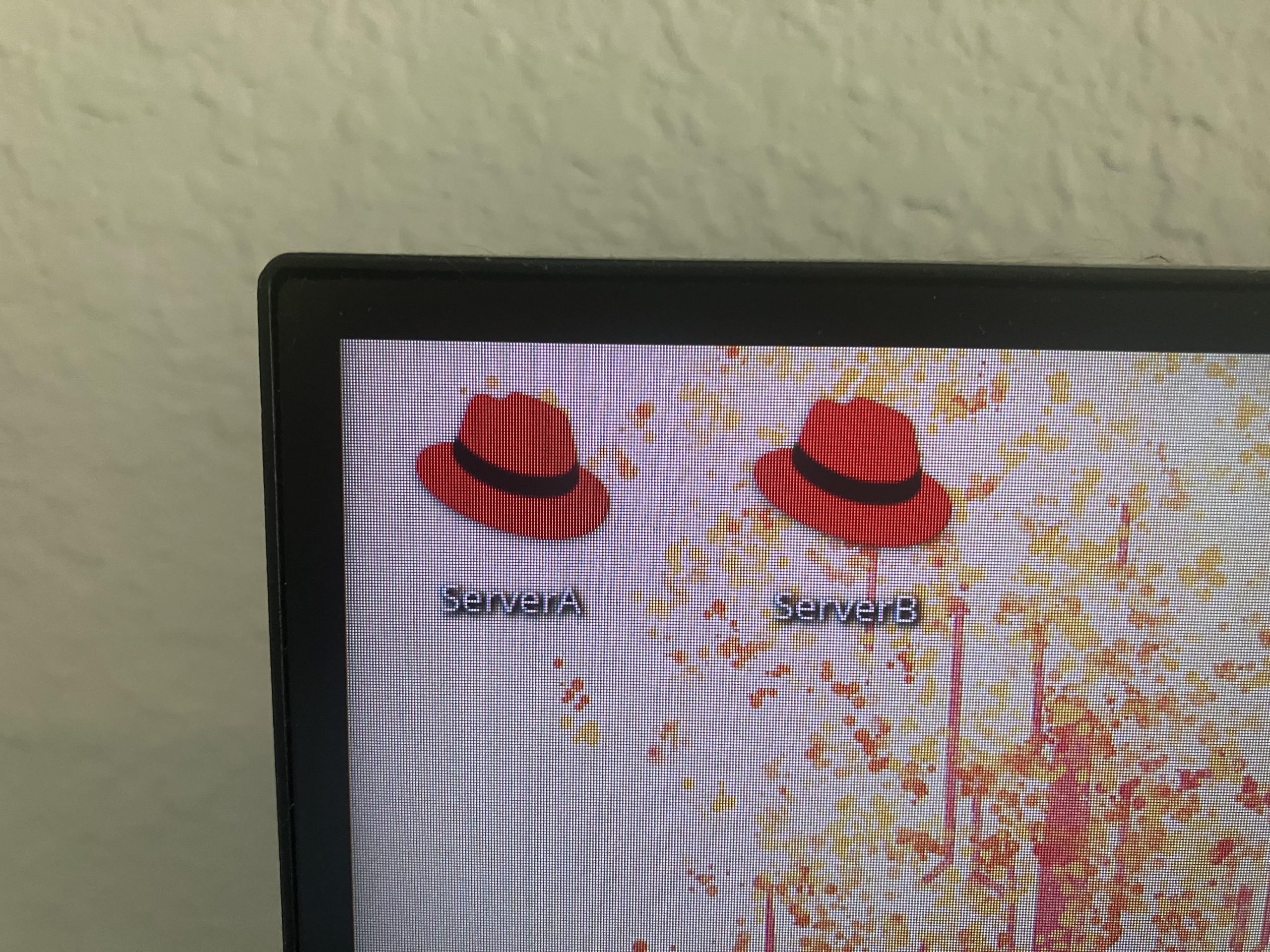
No Comments.